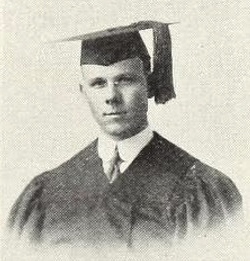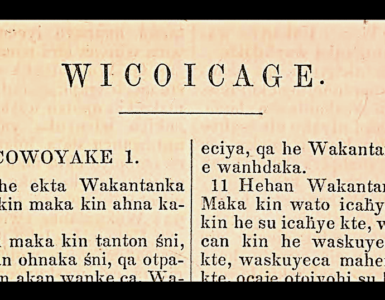 At Pearl Harbor 75 years ago on Sunday morning December 7, 1941, Capt. Thomas L. Kirkpatrick, Presbyterian, was the first chaplain of the United States military killed in World War II. Chaplain Kirkpatrick had been going about his Sunday duties while drinking coffee and chatting with the men in anticipation of the morning service he would lead. However, Chaplain Kirkpatrick along with hundreds of others were gone, in an instant, when a Japanese 800 kilogram bomb found its target and detonated the magazine of the U.S.S. Arizona in an explosion that heaved the deck before it broke apart into shrapnel, conflagration, wreckage, and billowing smoke. As is often said of such deaths, they, fortunately, never knew what hit them. Another chaplain, Lt. Aloysius H. Schmitt, Roman Catholic, served aboard the U.S.S. Oklahoma which was hit by several torpedoes that damaged its hull sufficiently to allow water to fill it causing the ship to capsize. Men trapped by the encroaching harbor were seeking a way out when Father Schmitt gave a helping hand at the cost of his own life and became the second chaplain to die in the war. Father Schmitt’s body was recovered later and buried, but any remains of Rev. Kirkpatrick are in the Arizona’s wreckage. Both of these men have been honored with medals and a plaque has been included for them at the U.S.S. Arizona Memorial Visitors Center at Pearl Harbor.
At Pearl Harbor 75 years ago on Sunday morning December 7, 1941, Capt. Thomas L. Kirkpatrick, Presbyterian, was the first chaplain of the United States military killed in World War II. Chaplain Kirkpatrick had been going about his Sunday duties while drinking coffee and chatting with the men in anticipation of the morning service he would lead. However, Chaplain Kirkpatrick along with hundreds of others were gone, in an instant, when a Japanese 800 kilogram bomb found its target and detonated the magazine of the U.S.S. Arizona in an explosion that heaved the deck before it broke apart into shrapnel, conflagration, wreckage, and billowing smoke. As is often said of such deaths, they, fortunately, never knew what hit them. Another chaplain, Lt. Aloysius H. Schmitt, Roman Catholic, served aboard the U.S.S. Oklahoma which was hit by several torpedoes that damaged its hull sufficiently to allow water to fill it causing the ship to capsize. Men trapped by the encroaching harbor were seeking a way out when Father Schmitt gave a helping hand at the cost of his own life and became the second chaplain to die in the war. Father Schmitt’s body was recovered later and buried, but any remains of Rev. Kirkpatrick are in the Arizona’s wreckage. Both of these men have been honored with medals and a plaque has been included for them at the U.S.S. Arizona Memorial Visitors Center at Pearl Harbor.
Through the efforts of Chaplain Kirkpatrick’s widow, Genevieve, the destroyer escort U.S.S. Kirkpatrick was launched June 5, 1943 at Orange, Texas, and contributed to the war effort.
Thomas LeRoy Kirkpatrick was born in Cozad, Nebraska, July 5, 1887. When he completed his high school studies he entered Colorado College where he graduated with the Bachelor of Arts in 1911. According to Colorado College publications, he was an active student involved in several organizations, societies, and a fraternity, ATΔ. During the fall of 1910, Kirkpatrick participated in a missionary conference held at the college which included speakers Arthur Rugh and Charles Ewald. Mr. Rugh was one of the leaders of the Young Men’s Christian Association (YMCA) work on foreign fields. Ewald, also with the YMCA, directed student work in South America organizing associations in the major schools of the continent. That same fall the influence of the YMCA at the college increased when it began offering missionary study classes in the curriculum. Thomas Kirkpatrick was active in the college YMCA and held several offices during his four years. He taught a class titled, “Japan of Today,” in the YMCA program which was based on a special study of the nation and the activities of the YMCA with the Japanese. Little did he know at the time that it would be a Japanese bomb that would end his life. Thomas must have been a popular man on campus because when his fraternity published its brief bit in the list of house pitches in Pikes Peak Nugget, 1910, his house said of itself, “ALPHA TAU DELTA—We have the only chapter of all-round fraternity men in college. We are after all the good looking men and of course we make mistakes—but we are willing to take chances if you are. Kirkpatrick, the secretary of the YMCA, is a member of our chapter.” The participation of young Kirkpatrick was a stamp of approval.
Included in his college activities along with his YMCA work was assistant editor of the college newspaper, president of the Student Volunteer Bank, Student Commission-Manager of Debating, membership in the glee club, and representative to the Pan Hellenic Council. The three or four years between his Colorado College graduation in 1911 and completion of his divinity program at McCormick Theological Seminary in Chicago in 1918 are unaccounted for in the sources, but it may be he pursued his interest in Persia missions and it did not work out, or his interest in the YMCA may have involved him in its interdenominational work. Regardless, he was ordained February 6, 1918, by the Presbytery of Chicago, Presbyterian Church in the United States of America (PCUSA) and he would very soon be ministering in the military.
Appointed a Chaplain February 12, 1918, in the midst of the United States involvement in The Great War (World War I), his first post was at the Navy Yard, Washington, until he went “over there” to France where he served in the Naval Air Station in Pauillac, France, until he was transferred September 1918 to the Radio Station, Croix d’Hins, France. The Great War ended November 11, but Chaplain Kirkpatrick continued with the station until he was transferred to Lille where he worked with Navy Relief until May 1919. It had taken a considerable number of months for the ill-prepared American Expeditionary Force to build up its presence in Europe when war was declared by President Wilson in April 1917, but once the war ended, stabilizing the region and sending the troops back home also took some time and the devastation of the French required a helping hand. As the seventy-fifth anniversary of Pearl Harbor is remembered, it should be noted that next year marks the centennial of United States involvement in The Great War.
Chaplain Kirkpatrick’s post-war duty began on the U.S.S. North Dakota and continued until the day before his birthday in 1921. His peace-time assignment included a promotion when he was commissioned lieutenant, November 1, 1920. Following a two-year service on the U.S.S. Utah, he married Genevieve Burnet in the fall of 1923, he was then reassigned to the Bureau of Navigation during which service he was again promoted, this time to lieutenant commander on November 2, 1924. Beginning in September 1925, he became Fleet Chaplain Kirkpatrick on the U.S.S. Huron until his transfer to the U.S.S. Pittsburgh where he served until August 1927. It is uncertain how it fits in but it is mentioned at the end of his service record that he participated in the Yangtze Campaign, 1926-1927, which involved United States Navy gunboats on the Yangtze River in China  during a period of particular instability and considerable danger for foreigners. Readers may remember Richard McKenna’s novel, “The Sand Pebbles,” with Steve McQueen starring in the cinematic version, which was based on events associated with the Yangtze Campaign. His next post was in the Naval Training School, San Diego, beginning October 1927 and continuing until his birthday in 1930. While in San Diego he was promoted to commander. Then, after two years on the U.S.S. Saratoga ending in May 1932, he was reassigned to the Navy Yard, New York, for three years. His next post moved him half-way around the world to Samoa for a two-year stint. In March 1937 he returned to San Diego for duty at the Marine Barracks until his final assignment on the Arizona began September 13, 1937. At the time of his death at Pearl Harbor he had recently been promoted to the rank of captain.
during a period of particular instability and considerable danger for foreigners. Readers may remember Richard McKenna’s novel, “The Sand Pebbles,” with Steve McQueen starring in the cinematic version, which was based on events associated with the Yangtze Campaign. His next post was in the Naval Training School, San Diego, beginning October 1927 and continuing until his birthday in 1930. While in San Diego he was promoted to commander. Then, after two years on the U.S.S. Saratoga ending in May 1932, he was reassigned to the Navy Yard, New York, for three years. His next post moved him half-way around the world to Samoa for a two-year stint. In March 1937 he returned to San Diego for duty at the Marine Barracks until his final assignment on the Arizona began September 13, 1937. At the time of his death at Pearl Harbor he had recently been promoted to the rank of captain.
Thomas and Genevieve Kirkpatrick had one child, a son named Thomas. He has published a book about his parents titled, The Love that Endures: Remembering My Mother and My Father, U. S. S. Arizona’s Chaplain at Pearl Harbor, 2011. Surely, many of the gaps and missing information in this Presbyterians of the Past biography such as the names of Chaplain Kirkpatrick’s parents and early life information could be found in this book. Chaplain Kirkpatrick’s clock from the Arizona was recovered and it is held in the museum of the Arizona Memorial in Pearl Harbor, it had stopped at 8:04:35.
Barry Waugh
For a biography about a First World War chaplain, read Chaplain T. M. Bulla.
Sources—The service record information was located in, United States Navy Chaplains, 1778-1945, vol. 3, by C. M. Drury, 1948. The Colorado College publications were located on Internet Archive. The website for the U.S.S. Arizona Memorial in Pearl Harbor is on the National Parks Service site (which by the way, this year is the NPS centennial). The two pictures of the Arizona at Pearl Harbor were generously provided by the Franklin D. Roosevelt Library and Presidential Museum public domain digital image collection. Unfortunately, I could not locate a photograph of Chaplain Kirkpatrick in his uniform that I could use online.
Notes–I am not sure if his middle name is spelled “Leroy” or “LeRoy,” but I chose the latter; the sources disagree on spelling.





